What is contraception?
Prevention of pregnancy using methods of birth control (contraceptive methods).
Facts on contraception
Most users wish to use methods which are comfortable, affordable and effective in preventing pregnancy and sexually transmitted diseases.
Contraceptive usage in the local context is widely discussed and available among married couples.
Information on contraception is important for teenagers today since there is an increasing number of them who are sexually-active.
Teenagers are encouraged to obtain advice from adults or health providers before deciding on the method of contraception that is most suitable for them.
There are two major groups of contraceptive methods:
- Non-hormonal
- Hormonal
Non-hormonal contraceptive methods
These methods do not use hormones and do not change a woman’;s menstrual cycle. Except for abstinence, they prevent pregnancy in one of several ways: by creating a “barrier” against sperm, interrupting sperm movement, or creating a hostile (unfriendly) environment for sperm.
1. Abstinence
- What it is : The act of not having any form of sex, either oral, vaginal, or anal
- How it works : Since there is no sexual intercourse, pregnancy is not possible. This is the most effective form of contraception (100% effectiveness)
- Benefits : For teenagers who have not been sexually-active – for whatever reasons, they should be encouraged to practice this method, since it is the most effective contraceptive in the world. These teenagers do not have to face any consequences or complications from intercourse, and they can avoid unplanned pregnancy and/or sexually transmitted diseases
- Drawbacks : It can be hard to abstain especially with pressures from friends or partners. Teenagers require a strong determination to deal with sexual desire, which can be hard to deal with. Even if teenagers practice abstinence, they still need a good understanding on other methods of contraceptive as well
2. Method: Coitus Interrupts (aka “withdrawal” or “pulling out”)
- What it is : Withdrawal of penis from vagina before ejaculation
- How it works : Since there is no ejaculation inside the vagina, there will be no sperm entering the vagina
- Benefits : Can be used readily especially when no other method is available
- Drawbacks : Needs a lot of self-control in male partners. Risk of pregnancy is increased if the male ejaculates as he is pulling out or right outside the vaginal opening. May interfere with sexual pleasure for both couple. Does not protect from sexually transmitted diseases
3. Barrier method
- Male condom
- Female condom
- Spermicidal
- Diaphragm and cervical cap
Male condom
- What it is : A latex or rubber sheath that covers the penis and collects semen
- How it works : Prevents sperm from entering the vagina, thus preventing pregnancy. Also limits the risk of sexually transmitted diseases
- Benefits : It is cheap, easy to use, and can prevent unplanned pregnancy and protect against most – but not all – sexually transmitted diseases. Easily available in drugstores or convenient stores and does not require medical personnel to prescribe. This method is quite popular and well-accepted among teenagers
- Drawbacks : To be effective, it must be applied on erected penis before penetration happens. Occasionally, it can tear or slip off during removal
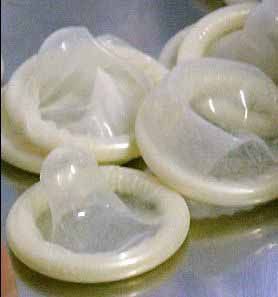
Female condom
- What it is : A plastic (polyurethane) sheath with flexible rings at each end, inserted into the vagina
- How it works : It functions as a cover in the vaginal canal. The ring at the closed end holds the sheath inside; the ring at the open end stays outside the vaginal opening. It collects semen before, during, and after ejaculation, thus preventing sperm from entering the vagina
- Benefits : Besides preventing pregnancy, it also protects against most, but not all sexually transmitted diseases. It allows women to share responsibility in preventing infection
- Drawbacks : Needs practice to insert it correctly. The outside ring may slip into the vagina during intercourse. May also cause discomfort and vaginal irritation. It is not as easily available as male condom and not popular among teenagers
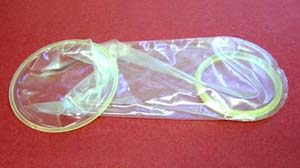
Spermicidal
- Can be in the form of foaming tablet, film, jelly or cream
- It is inserted inside the vagina before sexual intercourse
- It works by killing the sperm or making the sperm unable to move towards the egg
- It is simple to use but not as effective in preventing pregnancy
- It provides protection against some sexually transmitted diseases but not really known against HIV
Diaphragm and cervical cap
- They are soft rubber cups to be inserted inside the vagina that covers the cervix
- The cervical cap is smaller in size
- They work by blocking the sperm from entering the uterus and tubes
- A doctor need to be consulted to determine the right size and clients need to learn and practice how to use them at first
- A spermicidal is usually added to give better protection
- They can be inserted a few hours before sex
- It can protect against some sexual transmitted disease but may cause increase incidence of urinary tract infection
- They need to washed and cleaned after use and requires careful storage
4. Intrauterine contraceptive device (IUCD)
- What it is : A small “T” – shaped object that is inserted through the cervix and placed within the cavity of the uterus. A small string hangs down from the IUCD into the upper part of the vagina and it can be felt by the woman. It can be attached with copper or hormonal rod
- How it works : It occupies the uterine cavity for years ( three to five years) and decreases the lifespan and movement of the sperm. With a hormonal rod added to the device, it changes the lining of the uterus to prevent a fertilized ovum (egg) from implanting (attaching itself) to the uterine wall
- Benefits : Requires no daily attention, immediately effective, and long lasting for years
- Drawbacks : Insertion and removal require trained medical personnel in clinic setting. Does not protect against sexually transmitted diseases. Also can cause menstrual problems such as menstrual cramps and heavy flow. It is not recommended to teenagers
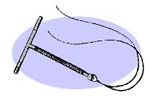
Hormonal contraceptive methods
These methods use hormones to prevent ovulation (release of an ovum from the ovary). They also work by making it difficult for sperm and ovum to join.
1. Birth control pills (aka ‘The Pills’)
- What it is : A contraceptive taken orally is usually made from two types of hormones (estrogen and progestin)
- How it works : A woman takes a pill every day at about the same time for 21 days and then stops for seven days, so she gets her period. The pills stop the release of ovum (ovulation), this preventing pregnancy
- Benefits : Besides preventing pregnancy effectively, it also makes a woman’s period to become more regular and shorter in duration, reduces menstrual symptoms such as cramps and bloating. It may also reduce mild acne
- Drawbacks : Users have to remember to take the pill every day, otherwise it will not prevent pregnancy and can cause irregular bleeding. It does not protect against sexually transmitted diseases. Minor side effects such as headache may occur
2. Depo-provera injection
- What it is : A hormonal (progestin) injection into the muscles (intramuscular) that a woman gets every three months (four times a year)
- How it works : An injection is given either in the arm or upper buttocks/lower back at any time during the first five days of a woman’s period. After the initial shot, a shot is given every 11 to 13 weeks. The hormone thickens the mucus at the uterine opening, making it difficult for sperms to pass through. It also causes the lining of the uterus to thin out, preventing pregnancy to happen
- Benefits : It prevents pregnancy for three months at a time. It is very private, immediately effective, and slowly reduces menstrual flow and may stop periods altogether
- Drawbacks : It does not protect against sexually transmitted diseases. May also cause irregular periods or spotting, slight weight gain, possible decrease in bone density, and side effects do not wear off until 12 to 14 weeks after a woman stops getting the injection

- What it is : An implant containing hormone (progestin) inserted beneath the skin over the inner side of the forearm
- How it works : It releases small amount of hormone over three or five years to prevent ovulation, thicken the mucus at the uterine opening and thin out the uterine lining
- Benefits : It prevents pregnancy over years, the user does not have to remember taking pills every day
- Drawbacks : It requires trained medical personnel to insert. It is so quite expensive, with irregular spotting being the commonest side-effect. It is not usually recommended for teenagers
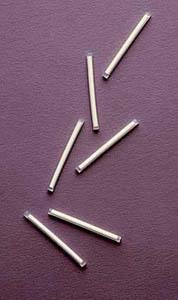
- What it is : A thin, beige, smooth patch that contains both hormones – progestin and estrogen. A woman puts the patch on her upper shoulder, buttock, abdomen, or upper arm once a week for three weeks. During the fourth week, no patch is used so as to trigger menstruation
- How it works : Hormones are released into the body, preventing the release of ovum (ovulation)
- Benefits : Easy to use and non-invasive
- Drawbacks : Does not protect against sexually transmitted diseases. Side effects can include nausea, breast tenderness, and headaches
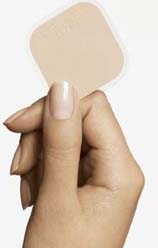
- What it is : A flexible, ring-shaped hormone contraceptive that is two inches in diameter and inserted into the vagina once a month
- How it works : It contains estrogen and progestin, which prevent the ovaries from releasing eggs. A woman keeps the ring inside her vagina for 21 days and then removes it, so her body can menstruate for seven days. After that, she inserts a new ring to begin the cycle again
- Benefits : Provides month-long protection against pregnancy. No daily pill taking, only have to remember to place a new ring in once a month
- Drawbacks: May feel uncomfortable to insert at first and irritation in the vagina and cervix can occur. Does not protect against sexually transmitted diseases. There may also be increased discharge, and the ring may slide out and need to be reinserted
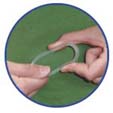
Emergency contraception aka ‘the morning-after pills’)
What it is :
Contraceptive methods that prevents pregnancy after unprotected vaginal intercourse – for instance, if birth control (like a condom) is not used, or in the case of rape.
Two forms of emergency contraception:
1. Hormone-based emergency contraceptive pills (ECPs), also known as “the morning-after pill,”
- ECPs are divided into two groups : either a combination of estrogen and progestin, or progestin-only. They can be taken up to 120 hours (five days after unprotected intercourse, but work best when taken within 72 hours (three days)
2. Intrauterine contraceptive device (IUCD)
The copper intrauterine device (IUCD) can be inserted within five days of unprotected intercourse and removed after the next menstrual period or remain inside for three or five years, providing long-term pregnancy prevention.
- How it works : For ECPs, a woman takes one dose right away and another 12 hours later. If she is already pregnant, ECPs will not affect the pregnancy. The hormones act to prevent ovulation, fertilization, or implantation of a fertilized egg The IUCD inserted within five days of unprotected intercourse, will prevent implantation
- Benefits : Can prevent unplanned pregnancy after unprotected intercourse and reduce the overall number of unplanned pregnancies and abortions
- Drawbacks : It does not protect against sexually transmitted diseases. ECPs can cause side effects like nausea, breast tenderness, irregular bleeding, and headaches. The IUCD is not suitable for women who have more than one partner and are at risk for sexually transmitted diseases, since insertion of the device can lead to pelvic infection
| Last Reviewed | : | 27 April 2012 |
| Content Writer | : | Dr. Harlina Halizah bt. Hj. Siraj |
| Reviewer | : | Dr. Iskandar Firzada b. Osman |







